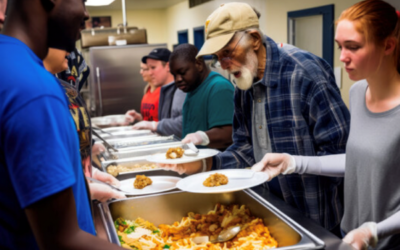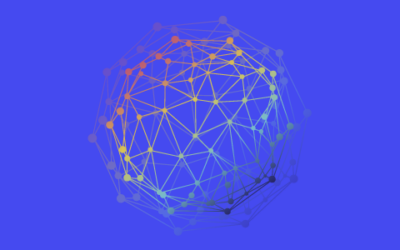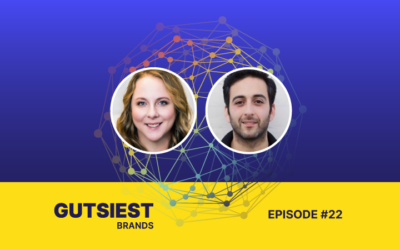How Technology Can Be More Human: Treating Customers as Humans, Not Data Points
Check out these snippets from the amazing conversation Toluna’s EVP of Enterprise, Jess Gaedeke, had at the InsighTalent vs InsighTech conference in early April. She sat down with Linda Mielnicki Light, Associate Director of Global Insights Connect & Gifting Portfolio at Mars Wrigley, and Angela Shih, Senior Director of Commercial Insights at Treasury Wine Estates.
Linda says her job revolves around nothing but M&Ms. Whereas, Angela’s treats are more for the nighttime as she manages data for a large portfolio of wine brands. Together with Jess, they talk about empathy, the future of research, and how the pandemic has changed things.
Here are some key takeaways from their discussion, and what they believe is the future of work…
Takeaway #1 – How Insights Jobs Are Changing
It’s no secret, the life of an insights professional has changed in recent years. Linda says, “What I see is timeframes are getting shorter and shorter. I never know what we’re going to be waking up to the next day in terms of some of our business questions.” Budgets have shrunk, timelines have shortened, and consumers are more demanding and opinionated than ever. That’s why Linda says, “We’ve started to rely very heavily on agile ways of working, agile innovation, and agile tools. And that bleeds into all the other types of non-innovation work that we do as researchers.” Being agile also means listening to ever-changing consumer commentary. Angela says, “In the past, it was ‘we’re the experts on wine.’ But no, we’re not the experts. Our consumers are the experts. So how do we leverage technology and dig in deeper from a consumer-centric perspective?”
Takeaway #2 – Insights Lead to Empathy
As Jess points out, “Research technology has had a clear impact on our industry…at a scale that we’ve never seen before.” When it comes to the value of applying research tools, Angela says she understands, “We have the ability to cast a wider net.” This was, in part, due to the pandemic. “We were working from home,” Angela recounts, “and you didn’t have the ability to travel to focus groups. We had to be creative in terms of ‘how do we talk to our consumers?’ And so, the ability to leverage technology to cast surveys online and get a very quick response was something that has evolved in the last three years.” Linda agrees, adding, “The other component is human empathy. It’s that ability to really look at ‘what are people organically saying?’ I want to be able to actually show examples [to executives], and I’m using technology in order to do that, to get leadership [to be] more empathetic to the real human experience.” Marketing is both an art and a science, but it all starts with being empathetic to the consumer.
Takeaway #3 – Culture Shapes Behavior
Markets aren’t the same globally, and human behavior is influenced by geography and culture more than we might admit. But it is vital to take advantage of and understand the differences between markets. Linda says she uses, “social scraping to do that. To start to uncover differences in cultures, in how people earn money, spend money, [and] where they prioritize that spending. And then that helped us to craft some key insights for our category.” For M&Ms, this meant digging into the human reward system. “We were able to take all of that very rational data and bring in that consumer experience that led us to some key insights around [how] people are seeking comfort. This is what people are seeking now, even though they’re not going to say it like that. This is those underlying things that they’re looking for.”
Takeaway #4 – Connect to Widen Your Audience
Markets don’t just differ through location; they differ in varying ethnic and social groups too. Angela says, “People want to connect to brands. They want to have something that resonates with themselves. They love M&Ms, we all grew up with [them], and it’s such a huge nostalgic icon. [That’s] what we’re trying to do with wine too. With Snoop [Dogg] as well.” Partnering with Snoop Dogg meant he brought in “a massive amount of consumers that were new to wine through an avenue that they felt connected with. And we were able to tailor to different ethnicities.” Many categories apply to a wide range of people, but capturing them as customers means relating to them in a way that invites them in. “It’s not even [about] how people are reacting to wine,” Angela says. “It’s how suppliers are reacting to consumers now. We have so much more information at our disposal, it is completely eye-opening.”
Takeaway #5 – Find a Research Partner
When picking a research partner, Linda says, “For me, it’s about agility. It’s about the ability to lean into new tools. It might not be right, but let’s try it. Because if we just keep going back to the things that have always worked, we’re all going to miss the boat on the development of some of these newer things that are coming up.” Angela agrees that research is what keeps companies moving forward.
Linda’s Word for the Future of Work?
“Exciting. Now is the time for us to start pivoting and shifting and thinking of new ways of doing things.”
Angela’s Word for the Future of Work?
“Consumer-Centric.”
Jess’s Word for the Future of Work?
“Empowered. I think we’ve got the right tools and the right people, and we’re going to do some great things.”
Want to hear more?
Check out the recording of the full session with Jess, Linda and Angela from Informa’s InsighTalent vs. InsighTech virtual conference here.
Written By
Want to stay up to date on the latest GutCheck blog posts?
Follow us on
Check Out Our Most Recent Blog Posts
When Vocation and Avocation Collide
At GutCheck, we have four brand pillars upon which we build our business. One of those is to 'lead...
Reflections on Season 1 of Gutsiest Brands
Understanding people is at the heart of market research. Sure, companies want to know what ideas...
Permission to Evolve with Miguel Garcia Castillo
(highlights from Episode #22 of the Gutsiest Brands podcast) Check out the latest lessons from our...
1-877-990-8111
[email protected]
© 2023 GutCheck is a registered trademark of Brainyak, Inc. All rights reserved.
© 2020 GutCheck is a registered trademark of Brainyak, Inc. All rights reserved.



